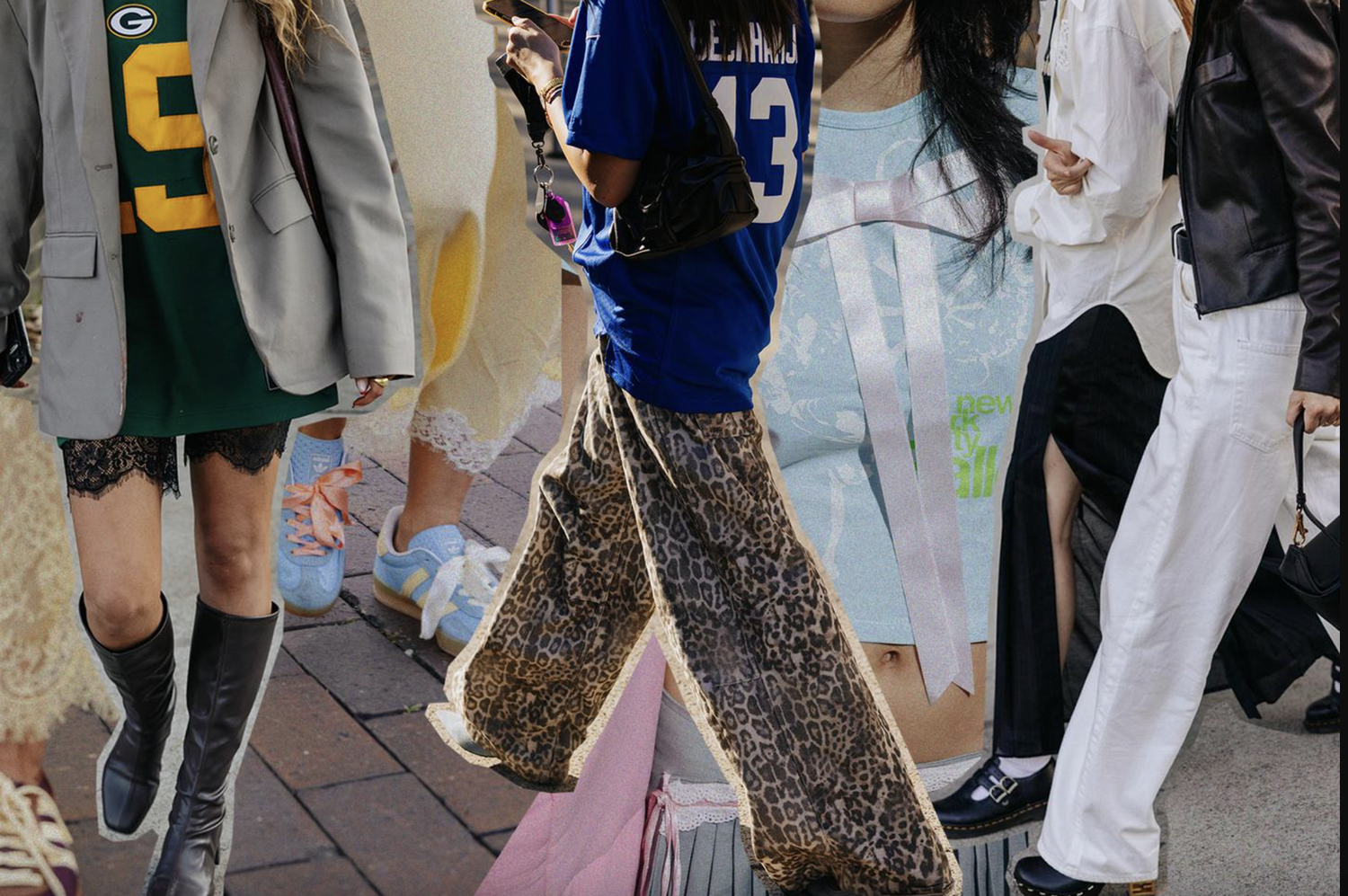
However, as rapid as these single items are, there has been a greater rise in more over-consumption with micro-aesthetics.
Micro-aesthetics are built-in brands that feature a number of “have to have” items that push a person to purchase and collect a number of pieces (clothes, jewelry, shoes, and other accessories) to build up one or multiple aesthetics. But instead of being decades-long, aesthetics are seasonal and quickly shift to the next one. And to fashion brands’ delight, there are a number of pieces that make up a micro-aesthetic, so those wanting to attain the look of the aesthetic will purchase more than a singular trendy item.
Examples include the recent “office siren” aesthetic, which focuses on office looks that combine a sexy feminine edge, or the “mob wife” aesthetic that transforms 1970s and 1990s mob movies into a niche wardrobe filled with fur and cheetah print.
What Do Aesthetic Microtrends Mean for Culture?
Inspired by a video by Antonio Gary Jr., a creative strategist and TikToker by the user Jax!, aesthetics don’t rely on the community behind it. Although some aesthetics gain inspiration from certain looks of a certain genre of music, movies, or art, they don’t involve people coming together and making a subculture.
From Australia Vogue, micro-aesthetics are defined as things you buy without having any unique, genuine style or interest in fashion. This also forces people to stray away from the inspiration potentially given through these subcultures because the trends are quickly turning.
Subcultures as a whole are broad communities of fashion that umbrella multiple different styles of that subculture, like how “goth” goes back to the 1980s and created nicher subcultures like “emo” and “scene.” And according to the same Australia Vogue article, our interests, regrettably so, come after the style of the aesthetic.
Nina Miyashita, who wrote the article, argues that choosing a style before adopting its lifestyle is inauthentic. Antonio Gary Jr., in his aforementioned video, almost agrees with Miyashita, describing the new phenomenon of micro-aesthetics and those who adopt multiple as “vibe chameleons.” These people interlink fashion and lifestyle depending on what group of people they are interacting with. Rather than sticking with their own personal style, they change their appearance to appeal to certain aesthetics and the people associated with them.
Although micro-aesthetics could end up driving someone towards more fashion knowledge and developing their own style, they become dangerous when people overconsume an array of “aesthetics” and throw them away once a new one emerges. That’s concerning because there will always be an excess amount of waste and an excess amount of “stuff” to worry about, buy, or quickly leave behind. And with the fast array of trends that are more than just one item, we are influenced to consume more and more.
What Does This Mean For The Environment?
Short answer – it depends on where you shop. Thrift stores are generally better for the environment, considering they give clothes a second life. So even if the trend goes away in a few months or a year, you’re able to buy something cheaper and more sustainable for the environment in the future. This method, essentially, saves clothes from ending up in the trash.
On the other hand, if you shop at the mall or online fast-fashion sites such as TikTok Shop, Shein, and Romwe, there’s a near certainty that those clothes were made using synthetic, non-biodegradable material. In other words, it can sit in a landfill for as long as 200 years before fully decomposing.
